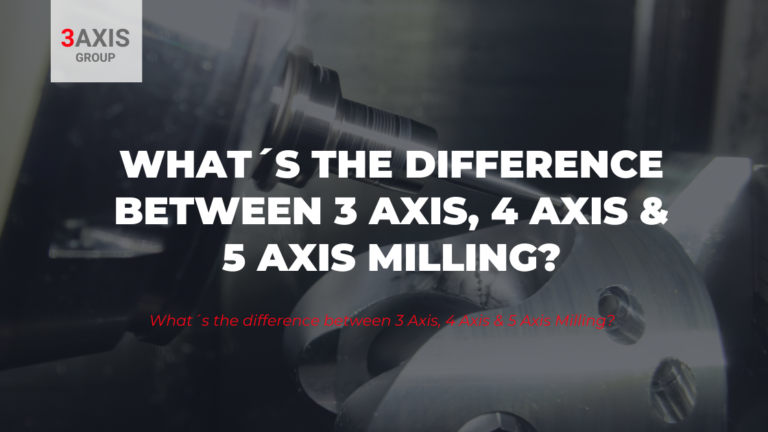Parts manufacturing techniques have greatly evolved over the past few years in response to the highly evolving needs of the different production sectors. Machining, which is one of the basic techniques, is done by removing shavings from raw materials to create high-precision parts.
So, what is the differences between 3, 4 and 5-axis CNC machining? How to choose a right 3 axis, 4 axis, or 5 axis CNC machine for your CNC machining projects? We tell youeverything in this post. Keep reading!
We tell you the difference between 3-, 4- and 5 axis milling machines
The main difference between 3-axis, 4-axis and 5-axis machining is the range of motion. While on 3-axis milling machines the cutting tool direction remains unchanged during the whole cutting path, in those with 4 and 5 axes the workpiece can also be moved.
For example, in 4-axis machining a rotation axisis added to the three axes, which is generally 360°rotation in the horizontal plane. This will be explained in detail later.
But as a summary we leave the range of movement of the 3, 4 and 5 axis milling machines:
• 3 axis has X, Y, Z axis
• 4 axis has X, Y, Z and A axis
• 5 axis has X, Y, Z, B and C axis
In short, the more complex the motion of the workpiece and the cutting tool, the more complex the shape of the final machined part can be. And more financial investment will be required.
3 Axis Machining
Although, 3-axis CNC milling is still one of the most popular and widely used machining processes is also the simplest type of machining. The workpiece is fixed in a single position and the spindle is available in the X, Y and Z linear directions.
As you can see, this is a relatively simple form of CNC machining, which can manufacture products with simple structure. For example, it’s very suitable for parts that are not too deep, but this technique is greatly limited when trying to handle a deeper part with narrow cavities.
The work can then become very labor-intensive and renders a finish that is less than perfect. Therefore, 3-axis machining is best suited to manufacture of planar milled profiles, drillings and threaded holes in-line with an axis.
4 Axis Machining
The 4th axis adds a rotation about the X-axis, called the A-axis. The spindle has 3 linear axes of movement (X-Y-Z), like in 3-axis machining, plus the A-axis occurs by rotation of the workpiece. There are a few different arrangements for 4 axis machines, but typically they are of the ‘vertical machining’ type, where the spindle rotates about the Z axis.
The workpiece is mounted in the X-axis and can rotate with the fixture in the A-axis 4-axis machining can be used as a more economically viable way of machining parts theoretically possible on a 3-axis machine. It greatly speeds up the machining process and has high machining accuracy.
5 Axis Machining
These CNC milling machines utilize 2 of the 3 possible rotation axes, depending on the type of machine. A machine will either utilize a rotation in the A-axis and C-axis, or a rotation in the B-axis and C-axis. The rotation either occurs by the workpiece, or by the spindle.
Five axis milling machine can process different sides of the workpiece without changing the position of the workpiece on the worktable, which can greatly improve the processing efficiency of prismatic parts. Thanks to the great versatility of these machines, they are often used for the following applications: medical parts, aerospace parts, titanium parts, oil and gas mechanical parts, military products, etc.
You should keep in mind that although there are many advantages in using 5-axis machinery compared with 4 axis and 3axis, not all products are suitable for 5 axis CNC machining, and those suitable for 3 axis CNC machining are not necessarily suitable for 5 axis machining.
Visit our marketplace and discover all the options in axes. Also, if you have any questions you can contact us. We will be happy to help you.
Discover also:




